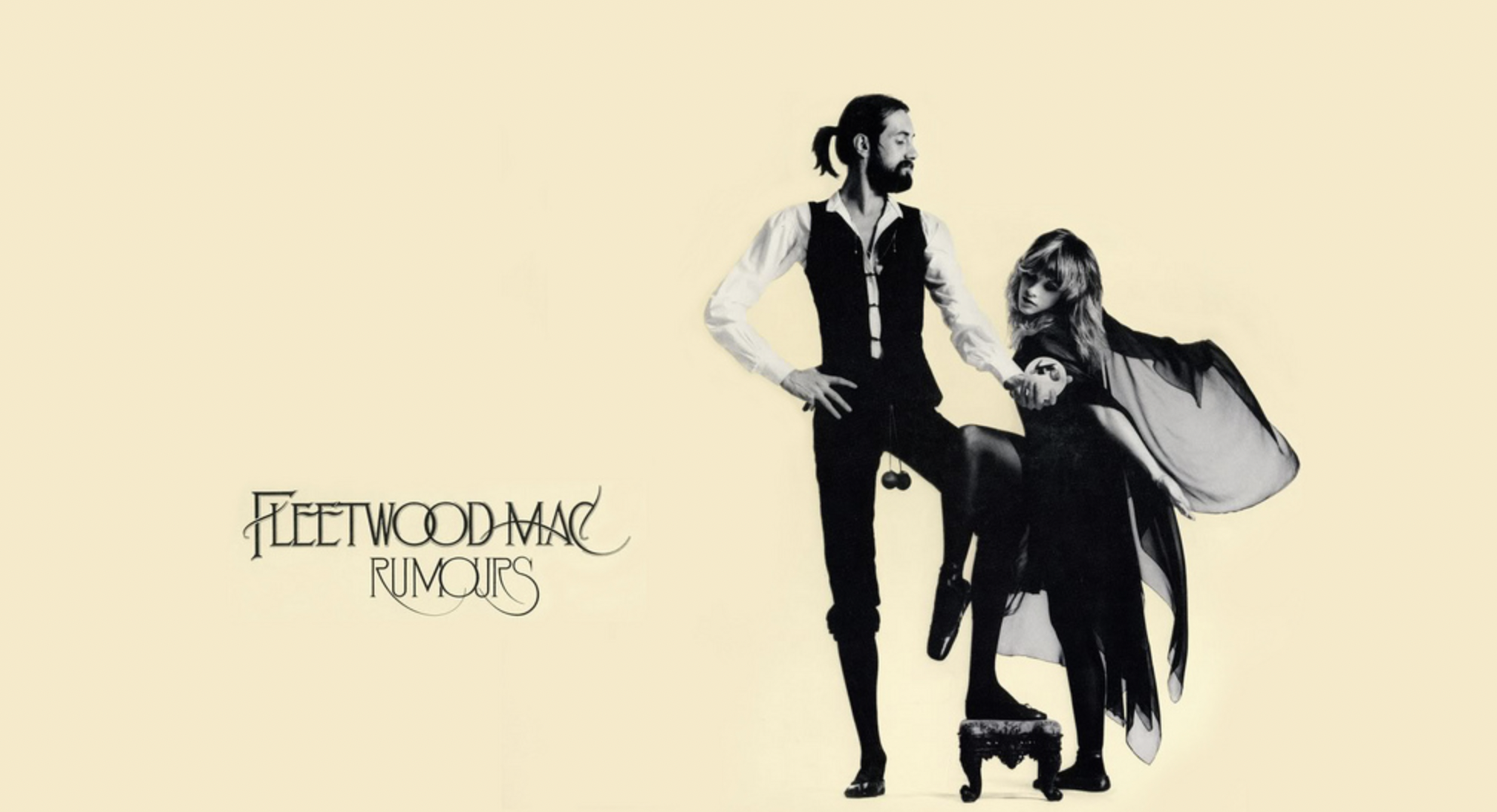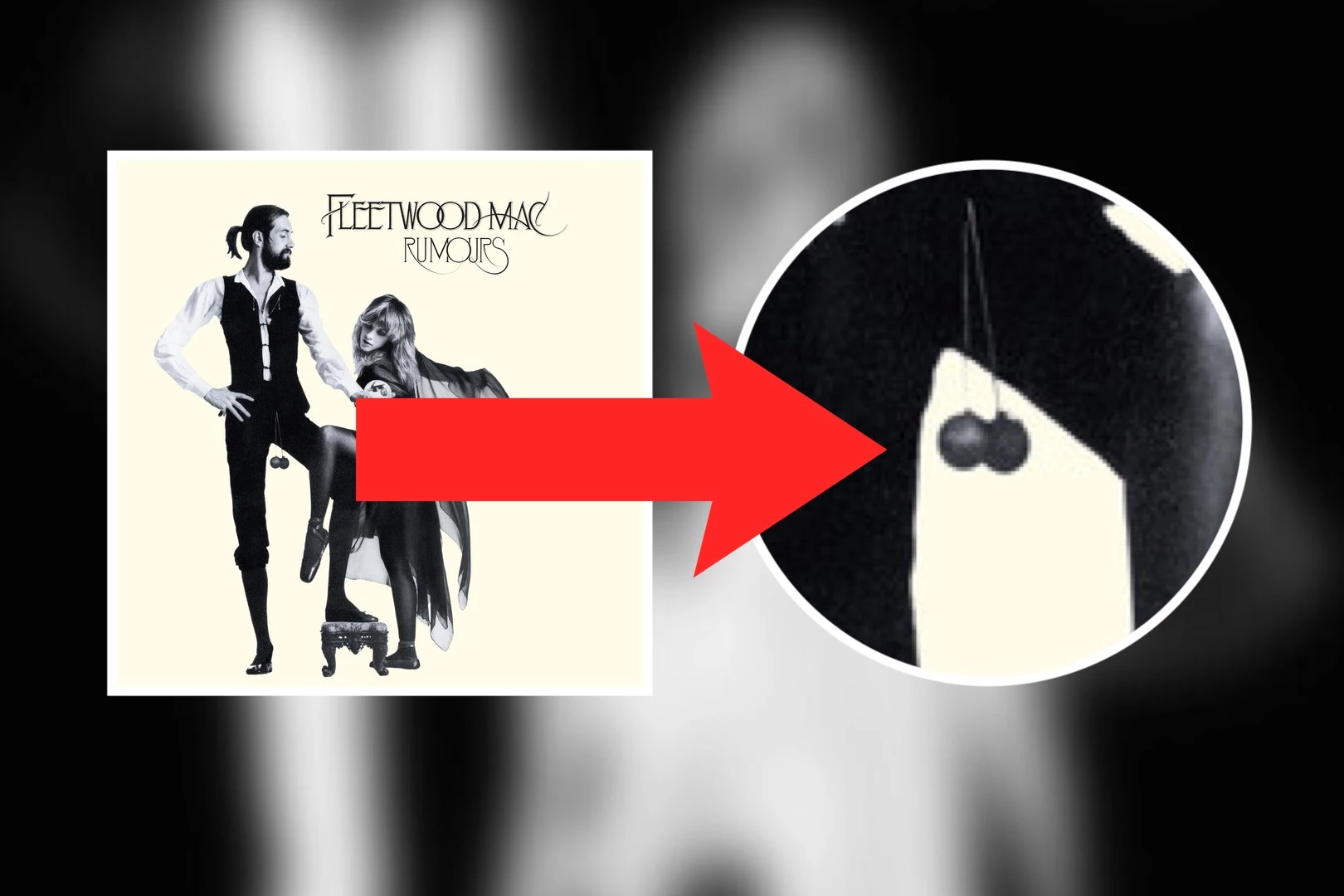Fleetwood Mac's "Rumours" Cover: The $128,000 Ball Story!
Could a pair of wooden balls, prominently displayed on an album cover, truly be worth a small fortune? The answer, for fans of Fleetwood Mac and their iconic 1977 album "Rumours," is a resounding yes, as the very props worn by drummer Mick Fleetwood have recently fetched a staggering $128,000 at auction.
The world of music, particularly the late 1970s, was no stranger to intriguing and often perplexing album art. However, the image that adorned Fleetwood Mac's "Rumours" stands out even within this era of bold visual statements. The cover, a study in contrasts, features a graceful Stevie Nicks in a black chiffon dress and pointe shoes, her gaze enigmatic, her hand clasped with that of a ponytailed Mick Fleetwood. It's Fleetwood, though, who commands immediate attention. His pose is relaxed, his left leg casually resting on an ottoman, and from his waist hang two wooden balls, a detail that instantly elevates the cover from intriguing to unforgettable.
The auction, held in the wake of Christine McVie's passing, offered a poignant moment of remembrance for the band's legacy. But it also put a spotlight on the curious history behind those now-famous wooden spheres. Their origin story is a charmingly unconventional one. According to reports, these weren't simply fabricated props; they were originally lavatory chains, "snatched" from a club Fleetwood Mac played during their early years. Fleetwood incorporated them into his stage attire as a playful nod to the blues tradition, and they quickly became a signature element of his on-stage persona. The balls, lost and found countless times, became a symbol of the band's resilience and their ability to find levity even amidst the turmoil.
| Category | Details |
|---|---|
| Full Name | Michael John Kells Fleetwood |
| Born | June 24, 1947, in London, England |
| Occupation | Musician (Drummer), Bandleader, Actor |
| Years Active | 1960s - Present |
| Known For | Drummer and co-founder of Fleetwood Mac, iconic "Rumours" album cover |
| Instruments | Drums, Percussion |
| Associated Acts | Fleetwood Mac, Mick Fleetwood's Zoo |
| Notable Albums | Rumours (1977), Tusk (1979), Mirage (1982) |
| Key Contributions | Driving force behind Fleetwood Mac's success, distinctive drumming style |
| Awards & Recognition | Grammy Awards (multiple), Rock and Roll Hall of Fame (as member of Fleetwood Mac) |
| Personal Life | Married and divorced multiple times. He has four daughters. |
| Current Status | Still active in music, involved with various projects |
Reference Website: Fleetwood Mac Official Website
The "Rumours" album itself is steeped in lore and legend, a testament to the creative power that can arise from personal upheaval. Behind the polished production and soaring melodies lay a tumultuous reality: the divorce of John and Christine McVie, the breakup of Stevie Nicks and Lindsey Buckingham, and the complexities of Mick Fleetwood's own marital life. This raw emotional undercurrent is palpable in the music, making the album a cathartic experience for both the band members and their listeners. The cover, with its enigmatic imagery, reflected the internal struggles and external successes that characterized the making of "Rumours". The image captures the moment where art reflected real life and the raw experience.
The cover, photographed by Herbert Worthington in 1976, is indeed an instantly recognizable piece of art, transcending its time and cementing its place in music history. The image is an immediate conversation starter. From 14 to 84, people will be able to recall the image, and, like the music, it has stood the test of time. The cover is not just a visual representation, it's a statement.
The auction, which took place in Beverly Hills, California, saw several items from the Fleetwood Mac archives go under the hammer. The sale of the wooden balls, however, undoubtedly took center stage, drawing significant attention and highlighting the enduring fascination with the band's history. As the hammer fell, the final price of $128,000, which equaled to 105,000, served as a tangible demonstration of the enduring power of music, imagery, and the stories that weave them together.
The wooden balls, worn by Fleetwood for stage performances as well as the cover shoot, now represent more than just a quirky fashion statement. They're a symbol of the band's rebellious spirit, their ability to embrace the unexpected, and their willingness to translate their personal journeys into timeless art. The blues tradition, with its inherent humor and storytelling, is evident in the imagery. The imagery is an homage to the humor in the music.
The cover art, with its dreamlike quality and layered meanings, perfectly captures the atmosphere of "Rumours." The elegant Stevie Nicks, draped in dark robes and pointe shoes, is holding Fleetwood's hand, a symbol of partnership amidst the chaos. Fleetwood himself, standing with his foot on a stool and the wooden balls subtly displayed, adds an element of intrigue and playfulness to the photograph. The cover art's seeming contradictions mirror the album's complex emotions, perfectly capturing the tension and the magic that the band conjured.
The fact that this seemingly simple prop, a pair of wooden balls, could command such a high price at auction speaks volumes about the enduring legacy of Fleetwood Mac and the cultural significance of "Rumours". The balls' journey from a cheeky stage accessory to a valuable piece of rock and roll history is a testament to the band's impact, their ability to captivate audiences, and the unique blend of music, art, and personal experience that defined their success.
The sale of the balls also serves as a reminder of the emotional depth of the album, the band members were living through some of the most difficult periods of their personal lives, making their success even more remarkable. Their ability to channel these experiences into their music, creating a record that is both cathartic and captivating, is a testament to their artistry and resilience. The enduring popularity of "Rumours" is a testament to its ability to resonate with listeners on a deeply personal level. The music's honesty and vulnerability, combined with its infectious melodies and impeccable production, make it a timeless classic.
The recurring image of the crystal ball on the album cover as well as earlier works, suggest the mysticism woven into the story of Fleetwood Mac, adding another layer to the artwork. The album's enduring legacy is underscored by the $128,000 auction price, emphasizing how much the band means to the world.
The appeal of "Rumours" extends beyond the music. It encompasses the band members' personal stories, their captivating stage presence, and the iconic imagery that accompanied their work. The auction of the wooden balls, therefore, is more than just a sale of a prop; it's a recognition of the cultural impact of Fleetwood Mac, celebrating their ability to create art that continues to resonate with listeners decades later.
In conclusion, the sale of Mick Fleetwood's wooden balls for an astonishing $128,000 at auction underscores the enduring impact of Fleetwood Mac and their iconic album "Rumours". The auction also offers a reminder of how art and life intersect, creating unforgettable moments in music history. The story behind those wooden balls exemplifies the band's unique blend of music, artistry, and personal experiences.
The "Rumours" album itself is a landmark achievement, a tapestry of emotions and experiences. The music is both cathartic and captivating, and the cover perfectly reflects the atmosphere. The album is about the raw emotional undercurrent that is palpable in the music. The enduring popularity of "Rumours" is a testament to its ability to resonate with listeners on a deeply personal level. Its honesty and vulnerability, combined with its infectious melodies and impeccable production, make it a timeless classic.
The auction was held shortly after the death of Christine McVie, offering fans a moment of remembrance and celebration of the band's history. The sale of the balls is a testament to the band's impact, their ability to captivate audiences, and the unique blend of music, art, and personal experience that defined their success.
As the world continues to evolve, the legacy of Fleetwood Mac and "Rumours" will continue to inspire. The wooden balls represent more than just a quirky fashion statement; they symbolize the band's spirit, their ability to embrace the unexpected, and their willingness to translate personal journeys into timeless art.
The image has transcended time. "Rumours" has transcended society. The cover is not just a visual representation, it's a statement.


